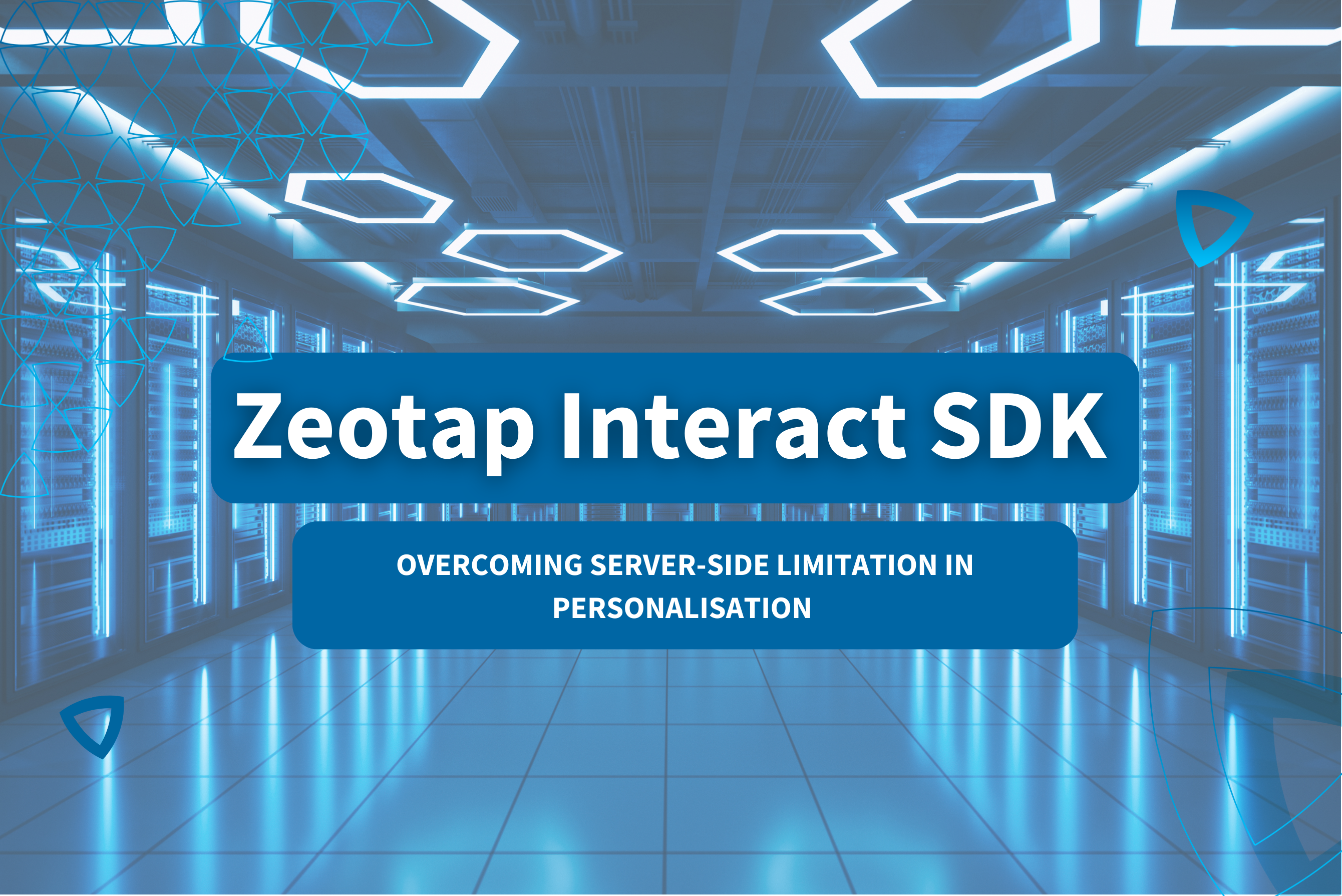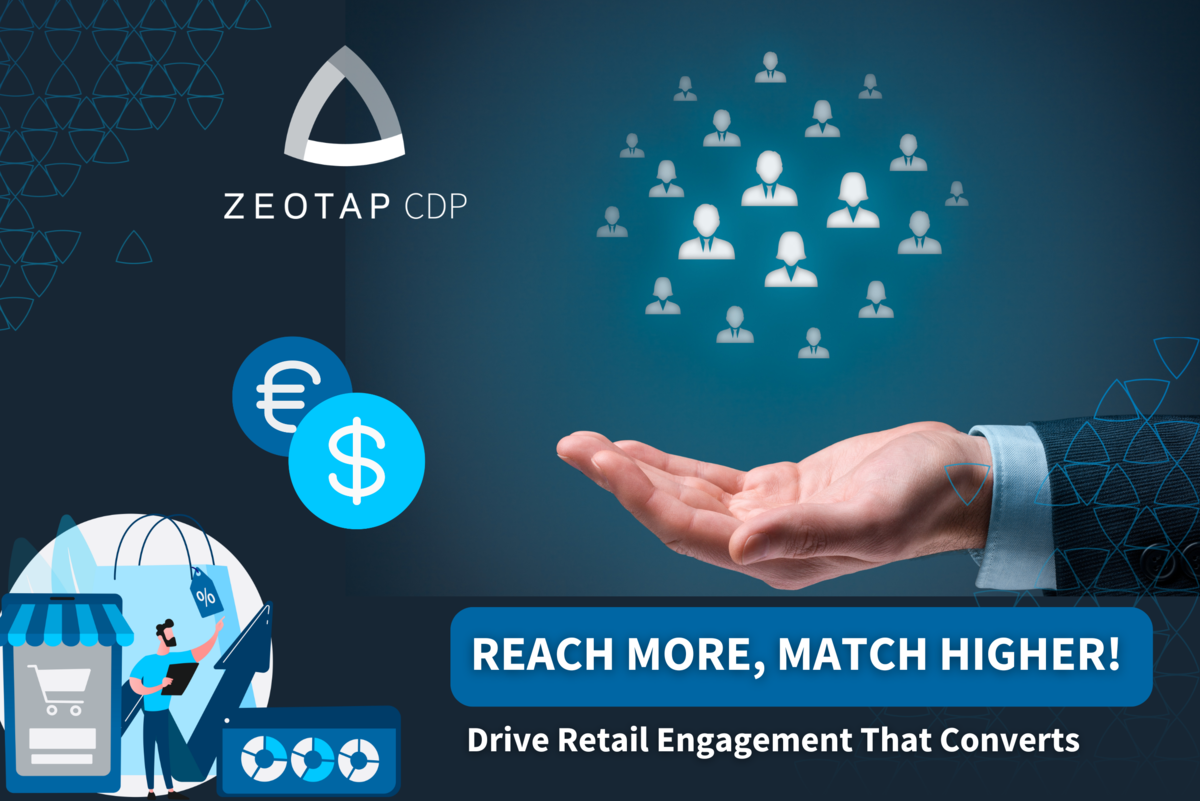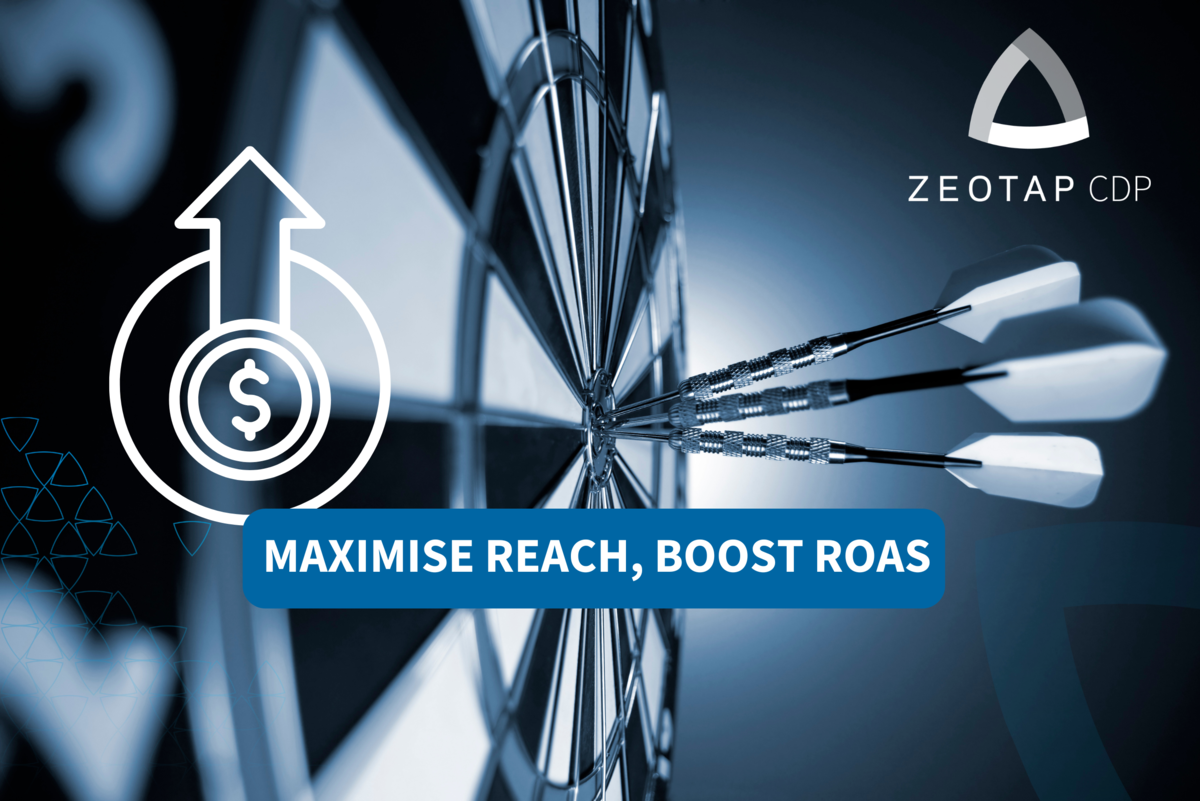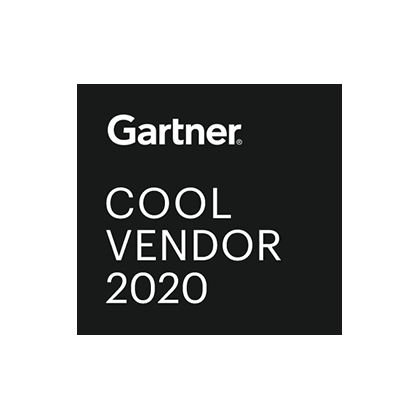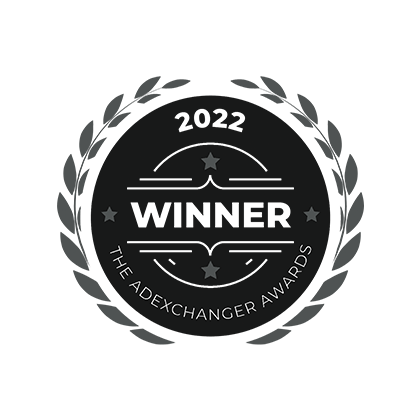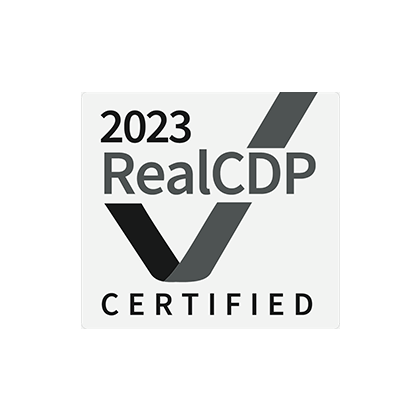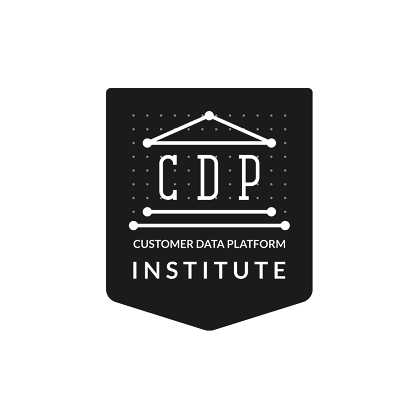With the impending deprecation of third-party cookies and the necessary shift towards a first-party-data strategy, businesses should start shifting from a Data Management Platform (DMP) to Customer Data Platform (CDP).
Unlike DMPs, in fact, CDPs focus on first-party data, offering versatility and adaptability for long-term customer engagement, even in a cookieless world. They enable businesses to leverage their first-party data effectively, ensuring hyper-personalised experiences and unlocking new opportunities for meaningful customer connections and sustainable growth. By investing in a CDP, businesses can stay ahead in a landscape where privacy concerns and regulatory changes reshape digital marketing strategies.
In this Blog post, we will explore the key arguments and compelling reasons why this shift is not just a matter of preference but a strategic imperative for businesses striving to thrive in the tumultuous seas of the digital age.
TLDR - 6 reasons to choose a CDP over a DMP
- CDPs can collect first-party, second-party and third-party data, including both anonymous and PII . While DMPs rely only on anonymised third-party data.
- CDPs capture raw data with granular-level detail and offer unlimited storage capacity.
- CDPs aggregate first-party data from diverse sources, providing comprehensive customer profiles to enhance long-term customer engagement and allowing the data to be utilised by various marketing tools as needed.
- CDPs enable the creation of tailored, customer-focused marketing messages and campaigns.
- CDPs enrich match rates by incorporating third-party data and offering features like audience expansion and look-alike modelling to reach a larger, more targeted audience.
- CDPs can collect, store and use personal data in an ethical manner. CDPs adhere to strict data privacy regulations such as GDPR and CCPA, ensuring that customer data is handled securely and transparently.
Three key changes that necessitated this strategic shift
A New Data Landscape
Consider this: by the end of 2025, global data creation is projected to reach a staggering 181 zettabytes, highlighting the ever-expanding digital footprint of our interconnected world. Amid this data deluge, enterprises need to find an efficient way to navigate the complexities of managing customer data. Both DMPs and CDPs serve this purpose but to different extents, in terms of the kind of data they collect and the use cases they support. DMPs, by their nature, have a narrower scope of action, while CDPs are more sophisticated tools, enabling them to tackle this challenge more effectively.
Deprecation of third-party cookies
The Adtech and Martech landscapes are undergoing significant transformations due to the impending demise of third-party cookies. Google has committed to phasing out 1% of third-party cookies in Chrome in the first quarter of 2024 and plans to eliminate them completely by September 2024. As a result, the industry is preparing for a future without these cookies.
This shift presents a unique opportunity for innovation and also demands adaptation, such as changing the technology stack that is used.
The Change in Customer Engagement Expectation
Today customers have come to expect personalised experiences tailored to their unique preferences and behaviours. The rise of e-commerce giants and social media platforms has set a new standard for customer engagement, where every interaction feels tailored and relevant.
However, traditional tools like DMPs struggle to keep pace with these evolving expectations. Limited by their reliance on third-party data and anonymous identifiers, DMPs face challenges in delivering the level of personalisation that modern customers demand.
In contrast, CDPs offer a solution to this conundrum by providing businesses with a more nuanced understanding of their customers. By unifying data across channels and constructing comprehensive customer profiles, CDPs empower businesses to deliver targeted and personalised interactions at scale.
From customised product recommendations to tailored marketing campaigns, CDPs enable businesses to meet the evolving expectations of customers and forge deeper, more meaningful connections in an increasingly competitive landscape.
Understanding the Difference between CDP and DMP
DMPs and CDPs diverge significantly in their approach and capabilities. The main difference, even though it is not the only one, relies on the type of data collected and hence in the kind of marketing activities that can be activated.
DMPs are designed primarily to aggregate and organise third-party data, such as cookies and segmented customer IDs, to facilitate targeted advertising campaigns.
Conversely, CDPs offer a more comprehensive and unified approach to customer data management, resolving identity at the individual level and enabling businesses to deliver highly targeted and personalised interactions across channels. Moreover, a CDP can be utilised beyond marketing, serving various enterprise functions such as Data science and customer care.
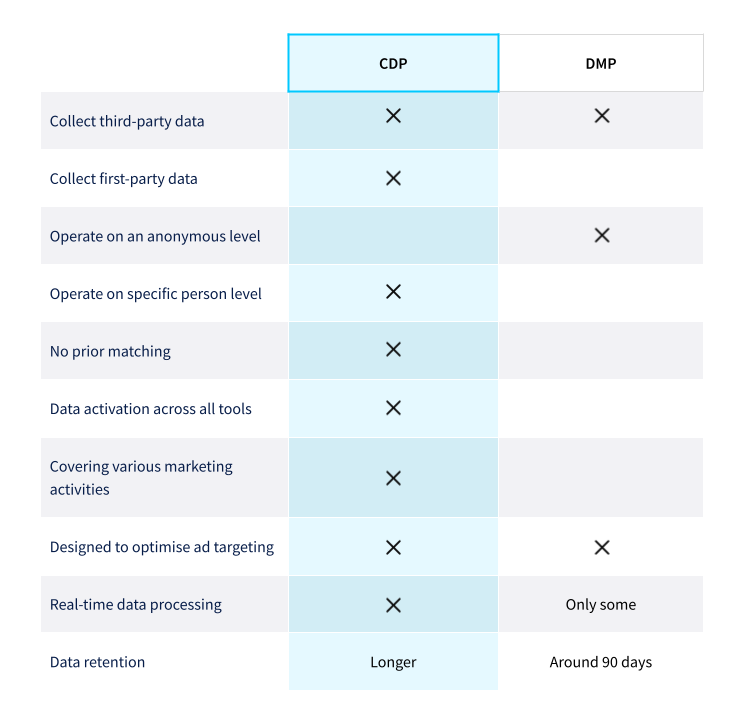
Understanding the Difference in Use Cases
Since CDPs and DMPs collect different kinds of data, they differ also in their use cases. We will explore the more typical ones:
CDP use cases:
- Personalised Marketing use case: CDPs enable personalised marketing campaigns by aggregating and analysing first-party data, allowing businesses to tailor content to individual customer preferences
- Customer Journey Optimisation: CDPs track and analyse customer interactions across various touchpoints, providing insights to optimise the customer journey and enhance engagement.
- Omni-channel Customer Experience: CDPs unify data from multiple channels, enabling seamless experiences across online and offline interactions, such as in-store personalised recommendations based on online browsing behaviour.
DMP Use Cases:
- Audience Segmentation: DMPs specialise in segmenting audiences based on third-party data, allowing advertisers to target specific demographics or interests with relevant advertising campaigns.
- Programmatic Advertising: DMPs facilitate programmatic advertising by leveraging data to target audiences in real-time across ad networks, exchanges, and platforms.
- Campaign Attribution: DMPs provide insights into the effectiveness of advertising campaigns by tracking audience interactions and attributing conversions to specific ads or channels.
| Feature / Use Cases | CDP | DMP |
| Processing of 1st party data (personal data) | x | |
| Processing of 3rd party data (mainly non-personal data) | x | x |
| Extensive ID stitching with different ID spaces | x | |
| High match rates in adtech channels through cooperation with ad networks | x | |
| Cookieless ID-Solution | x | |
| Long-term data storage for, among other things, CLV (Customer Lifetime Value) models | x | |
| Storage of temporary profiles with browsing history | x | x |
| Storage of persistent profiles with personal data | x | |
| Complete 360-degree profile of the customer | x | |
| Definition of customer segments | x | x |
| Creation of customer segments | x | x |
| Activation of segments in adtech channels | x | x |
| Activation of segments in Martech channels (SMM, email, etc.) | x | |
| Cross-channel real-time orchestration | x | |
| Acquisition, optimization of media spend, use of audience insights | x | x |
| Retail Media / Advertising Use Cases | x | x |
| Re-Targeting | x | x |
| Suppression (exclusion of existing customers) | x | |
| Loyalty campaigns | x | |
| Up & Cross-sell campaigns | x | |
| Real-time personalization (In-App, Website/Shop) | x | |
| Central Consent Management Handling (cross-channel) | x |
Leveraging Data for Strategic Advantage
Transitioning to CDP offers businesses a myriad of strategic benefits in today’s data-driven landscape. By centralising and unifying customer data across channels, CDPs provide businesses with a comprehensive view of their customers, enabling them to make more informed decisions and deliver highly targeted and personalised experiences.
Companies like DOUGLAS have leveraged CDPs to streamline their marketing efforts. The shift from a DMP to a CDP allowed them to scale up, utilise multiple identifiers, and improve targeting quality, ensuring precise messaging to their audiences at the right moment.
Similarly, Virgin Media O2 utilised CDP in its acquisition campaigns and customer care strategy to optimise media budget and decrease customer churn.
These success stories underscore the critical role of data-driven insights in driving business growth and gaining a competitive advantage in today’s hyper-competitive marketplace. By harnessing the power of CDPs, businesses can unlock new opportunities, optimise their operations, and stay ahead of the curve in an ever-evolving digital landscape.
How to overcome implementation challenges?
Switching from a DMP to a CDP can present businesses with a range of implementation challenges. Common concerns include:
- data migration complexities,
- integration with existing systems,
- ensuring data accuracy and consistency across platforms.
To successfully navigate these challenges, businesses should prioritise thorough planning and preparation. Practical tips and best practices for a smooth implementation process include:
- Conducting a comprehensive audit of existing data sources.
- Establishing clear objectives and KPIs.
- Selecting a CDP solution that aligns with the organization’s needs and goals.
- Preparing a rigorous procedure to accurately capture all requirements for migrating existing segments from DMP to CDP, such as data source mapping, destination mapping, and segment extraction.
- Implementing a third-party data use case strategy with the CDP promptly, while maintaining existing third-party use cases as long as they are available.
Additionally, fostering organisational buy-in and promoting cross-functional collaboration is paramount. Engaging stakeholders from across the organisation, including marketing, IT, and customer service teams, ensures a holistic approach to implementation and facilitates seamless integration with existing processes and workflows.
Conclusion
In summary, the transition from Data Management Platforms to Customer Data Platforms is imperative for businesses seeking to thrive in today’s data-driven landscape. CDPs offer a more comprehensive and unified approach to customer data management, enabling businesses to unlock insights and deliver personalised experiences at scale. By consolidating data across channels and constructing comprehensive customer profiles, CDPs empower businesses to make informed decisions and drive meaningful engagement with their target audience. Embracing CDPs is not just advantageous; it’s essential for staying competitive in an increasingly crowded and competitive marketplace.

Learn more about the difference between CDP and DMP with our brand-new white paper.
Download it for free!
